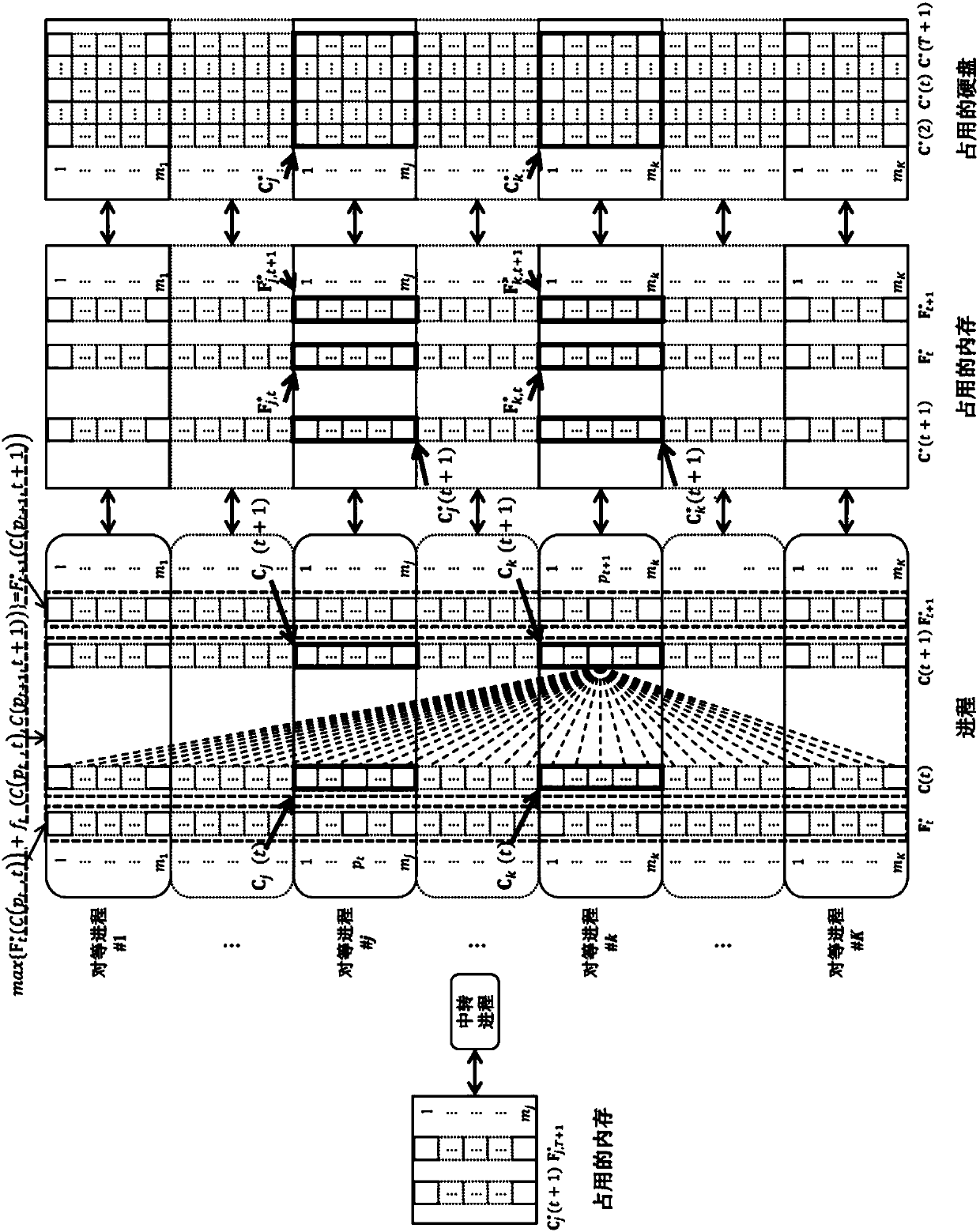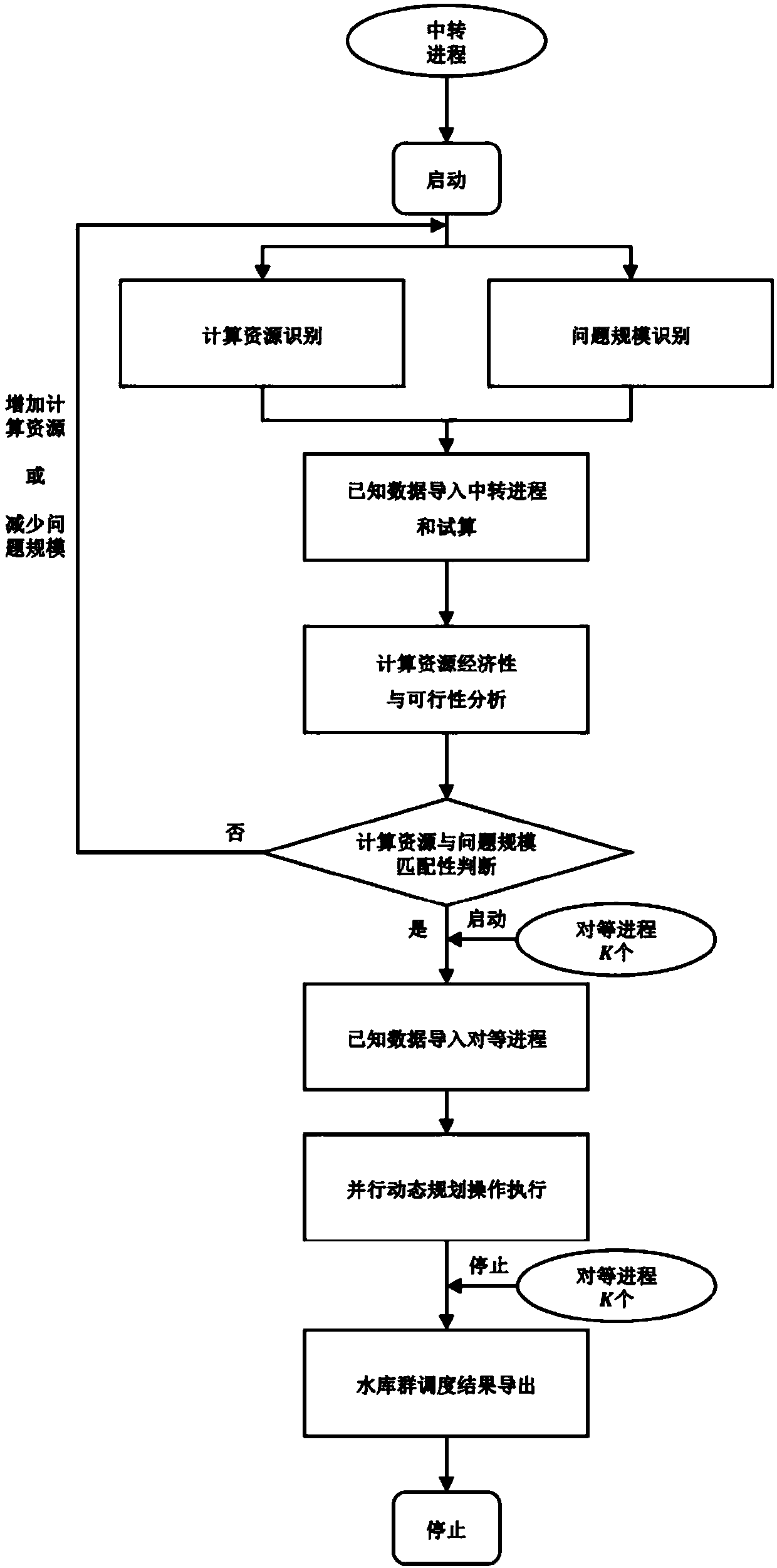Reservoir group scheduling parallel dynamic planning method considering computing resource economy and feasibility
A technology of computing resources and dynamic programming, which is applied in computer processing of hydrology and water resources data, computer scheduling of reservoir groups and parallel computing, and can solve problems such as reducing the computing time of DP method
- Summary
- Abstract
- Description
- Claims
- Application Information
AI Technical Summary
Problems solved by technology
Method used
Image
Examples
Embodiment 1
[0073] This embodiment is a parallel dynamic planning method for reservoir group scheduling considering the economic and feasible computing resources. The distributed storage parallel computing system used in the method includes: a plurality of computing units connected through a network, and the computing unit includes There are multiple physical cores, memory and hard drives, such as figure 1 Shown.
[0074] Considering the huge amount of calculation, the method described in this implementation requires hundreds or thousands of processing units to form a distributed storage parallel computing environment. In order to reduce the footprint of the hardware system, when the number of processing units required is large, you can consider using hundreds or thousands of blade servers as processing units and connect them together through a network. See figure 1 .
[0075] In a distributed storage parallel computing environment, each processing unit exchanges information through a message ...
Embodiment 2
[0148] This embodiment is an improvement of the first embodiment, and is a refinement of the steps of the first embodiment regarding the calculation resource economy and feasibility analysis. The clock time τ in the step of calculating resource economy and feasibility analysis described in this embodiment K :
[0149] τ K =(τ′+τ″+τ″′) / K,
[0150] Where: τ K To use the clock time calculated by K peer processes, including calculating the fragment time τ′, τ′=m 2n ×Δτ×T, communication fragmentation time τ″, load imbalance time loss τ″′;
[0151] Memory RAM under the jurisdiction of a single peer process K :
[0152] RAM k =(m n ×3×Φ) / K,
[0153] Where: Φ is the storage space occupied by variables that do not distinguish between variable types;
[0154] Hard disk HDD controlled by a single peer process K :
[0155] HDD K =(m n ×T×Φ) / K.
Embodiment 3
[0157] This embodiment is an improvement of the first embodiment, and is a refinement of the steps performed in the first embodiment regarding the parallel dynamic programming operation. The sub-steps included in the steps of the parallel dynamic programming operation described in this embodiment are as follows:
[0158] The parallel dynamic programming operation includes two processes, the first process and the second process:
[0159] The first process, the process is like Figure 4 Shown:
[0160] (1) According to the principle of equal division, allocate computing memory and hard disk space for K peer processes.
[0161] This step is a key step for realizing distributed memory and hard disk fragmentation and dynamic access. Only through allocation can all memory and hard disk space be reasonably used to make it fully functional.
[0162] (2) When t=1, use k to represent any peer process, according to F 1 * (·)=0 and C(p 1 ,1), initialization with Among them: k=1,2,...,K.
[0163] ...
PUM
 Login to View More
Login to View More Abstract
Description
Claims
Application Information
 Login to View More
Login to View More - R&D
- Intellectual Property
- Life Sciences
- Materials
- Tech Scout
- Unparalleled Data Quality
- Higher Quality Content
- 60% Fewer Hallucinations
Browse by: Latest US Patents, China's latest patents, Technical Efficacy Thesaurus, Application Domain, Technology Topic, Popular Technical Reports.
© 2025 PatSnap. All rights reserved.Legal|Privacy policy|Modern Slavery Act Transparency Statement|Sitemap|About US| Contact US: help@patsnap.com



